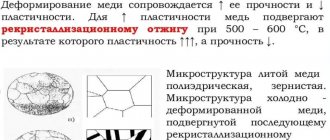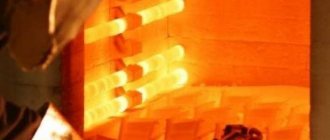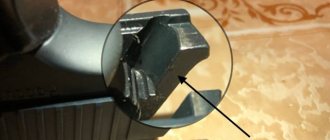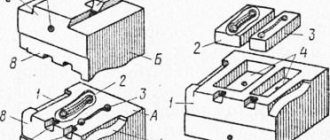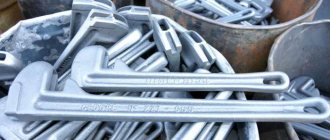Annealing, hardening and heat treatment of bronze
Are you interested in annealing, hardening and heat treatment of bronze? The supplier Avec Global offers to buy bronze of domestic and foreign production at an affordable price in a wide range. We will ensure delivery of products to any point on the continent. The price is optimal.
Basic heat treatment operations
Homogenization, hardening, annealing and tempering.
Homogenization
Homogenization is used to reduce the segregation and corrosion found in some cast and hot-worked bronze workpieces, primarily those containing a higher percentage of tin. Diffusion and homogenization are slower and more difficult in tin and silicon, so these alloys usually undergo lengthy homogenizing treatments before hot or cold working operations. Bronzes (containing more than 8% Sn) are characterized by extreme segregation. Therefore, before processing, the brittle segregated tin phase is first destroyed, thereby increasing strength and ductility, and reducing hardness before rolling. These goals are achieved by homogenization at a temperature of about 760 ° C. Cold treatment is used much less frequently.
Annealing
The workpiece is heated to a temperature that induces recrystallization and, if maximum softening is desired, heated above the recrystallization temperature to induce grain growth. The annealing process is affected by many interacting variables. The heating rate, furnace design, furnace atmosphere and workpiece shape are important. For bronze alloys, the criterion for assessing the quality of recrystallization annealing is the grain size.
Annealing temperature
- light annealing, which is performed at a temperature slightly above the recrystallization temperature;
- soft annealing, the annealing temperature is just below the point at which rapid grain growth begins.
The supplier Avec Global offers to buy bronze of domestic and foreign production at an affordable price in a wide range. We will ensure delivery of products to any point on the continent. The price is optimal.
Vacation
Stress relief in bronze workpieces aims to reduce or eliminate residual stress, thereby reducing the likelihood that the part will fail due to cracking or corrosion fatigue during operation. A number of bronzes, particularly aluminum and silicon bronzes, can crack under critical stress. Stress relief tempering is performed at temperatures below the normal annealing range that do not cause recrystallization and subsequent softening of the metal.
Hardening
High strength in most grades of bronze alloys is achieved through cold working. Hardening is used to increase mechanical strength beyond the levels typically obtained by cold plastic deformation. Examples of precipitating hardening copper alloys include beryllium and silicon bronzes, as well as bronzes with higher phosphorus and silicon contents.
Buy. Supplier, price
Are you interested in annealing, hardening and heat treatment of bronze? The supplier Avec Global offers to buy bronze of domestic and foreign production at an affordable price in a wide range. We will ensure delivery of products to any point on the continent. The price is optimal. We invite you to partner cooperation.
Heat-strengthening (ennobled) bronzesIn some bronzes, as the temperature decreases, the solubility of the alloying component drops sharply and its separation from the solid solution leads to the effect of dispersion hardening. This process is accompanied by a sharp change in physical and mechanical properties.
Bronzes capable of dispersion hardening make it possible to strengthen products made from them through special heat treatment (refinement). As a result, hardness, yield and strength limits, elastic moduli increase, corrosion resistance improves, and thermal and electrical conductivity increases.
Bronzes with the effect of dispersion hardening include beryllium, chromium, zirconium, silicon-nickel and some complex alloys (see table of bronze grades). Semi-finished products from such bronzes (rods, strips, plates, wire) have the following delivery conditions:
— Without heat treatment
These are hot-rolled slabs or extruded rods that cool at a natural rate.
— With heat treatment (hardening)
In this case, the semi-finished product is heated to a certain “high” temperature, after which it is quenched in water to obtain a supersaturated solid solution. These are hardened semi-finished products, the condition of which is usually marked with the letter “M”. This heat treatment increases plasticity and allows further operations of bending, drawing, rolling and other types of cold deformation. The hardness, yield and strength limits, and ductility of hardened bronzes are somewhat higher than those of pressed bronzes.
— With heat treatment (quenching) and subsequent cold deformation
Cold deformation increases the yield and strength limits and increases the hardness of hardened semi-finished products. A cold-worked semi-finished product after hardening is usually marked with the letter “T”.
The second stage of heat treatment - tempering, is usually carried out already on the product. Tempering is carried out at “low temperature” for a certain time. During the tempering process, the α-phase is released with an ordered distribution of the alloying element. These precipitates are associated with significant stresses in the crystal lattice, which cause an increase in strength and hardness.
Thus, the refining of this class of bronzes consists of two operations. First, rapid hardening is carried out, then long tempering. Between quenching and tempering, cold work hardening or part manufacturing can take place. Refining regimes strongly depend on the chemical composition of bronze. For BrB2, the hardening temperature is 750-790 C, the tempering temperature is 300 - 350 C for 2 - 4 hours. For BrKh0.5, the hardening temperature is 950 C, the tempering temperature is 400 C for 4 hours.
The effect of heat treatment for a BrB2 rod is shown in the histogram, and for strips - in the table. The table also shows the effect of refining for chromium bronze BrKh0.5.
| BrB2 | BrХ0.5 | |||
| After hardening (M) | After quenching and tempering | After hardening (M) | After quenching and tempering | |
| Elastic modulus E | 9500 | 10500 | 11200 | |
| Yield strength | 20 — 35 | 95 — 135 | 5 | 27 |
| Tensile strength | 40 — 60 | 110-150 | 24 | 41 |
| Relative extension | 20 | 2 | 50 | 22 |
| Hardness HV | <130 | 330 | 65 | 130 |
| Electrical resistance | 0.1 | 0.04 — 0.07 | 0.04 | 0.02 |
Dispersion hardening of products made from heat-strengthened bronzes (BrB2, BrKh, BrKhTsr, BrKN, BrAZhN) and alloys (MNMts20-30) significantly increases strength and hardness in comparison with the original supply material. Products made of beryllium bronze have the greatest effect from refining.
Annealing of tin bronzes
Low-temperature annealing of deformed tin bronzes, like brasses, increases the elastic modulus of samples (especially those cut in the transverse direction) and the elastic limit (Fig. 282).
As in the case of brass, the elastic limit of tin bronzes after annealing increases to a greater extent, the higher the degree of previous plastic deformation. So, in the case of bronze Br. OTs4-3 with increasing compression from 20 to 40, 60 and 80% annealing increases the elastic limit (o0.005) by 24.5; 64.6; 80.8 and 141 MN/m2 (2.5, 6.6, 8.2 and 14.4 kg/mm2), respectively. After annealing over the entire temperature range studied, the increase in the elastic limit corresponds to an increase in the elastic modulus. Maximum elastic limit of bronze Br. OTs4-3 corresponds to annealing at 150-200°C (Table 61).
In bronze Br. OF 4-0.25, the maximum limit and modulus of elasticity are achieved after annealing at 175 ° C for 30 minutes, and for bronze Br. OF6.5-0.15 - after annealing at 250° C for 30-60 minutes.
When deciding on the choice of a rational annealing mode for tin-phosphorus bronze, Br. 006.5-0.15, it must be taken into account that annealing at 250° C, while increasing the elastic limit, does not reduce the resistance to large plastic deformations (hardness).
The residual stresses in deformed bronze are low - up to 30 Mn/m2 (3 kg/mm2) and after annealing they are reduced to 15 Mn/m2 (1.5 kg/mm2). Thus, the increase in elastic limit due to this reduction may be insignificant. When annealing deformed tin bronze, diffusion movements of component atoms also occur, but there is little data on the nature of these processes. According to this, in deformed tin bronze during annealing one can expect the release of an excess phase enriched in tin. This is evidenced by a rather noticeable decrease in electrical resistivity during annealing (see Fig. 271). According to the work, electron microscopic examination of deformed tin bronze after annealing at temperatures of 50° C and above reveals strong Cottrell strain aging. A.M. Ryabyshev showed that during annealing, a restructuring of structural defects also occurs according to the type of polygonization, which leads to an increase in resistance to small plastic deformations.
A comparison of the properties of tin bronze of the main compositions shows that all of them after annealing have fairly similar properties, but still higher properties are achieved in bronze Br.OF6.5-0.15. The greatest increase in the elastic limit compared to the deformed state was observed for bronze with 4% Sn and 0.25% P.
The structural state of tin bronze after deformation is different from that of brass. This is manifested in the fact that additional tensile deformation of bronze wire Br.Of4-0.25 does not reduce (as in the case of brass), but even slightly increases the elastic limit: T0.005 increases from 160 to 165 Mn/m2 (from 16. 5 to 17.0 kg/mm2). If a wire made of this bronze is annealed at 200°C for 30 minutes, then the elastic limit increases to 185 MN/m2 (19.0 kg/mm2), and after additional tensile deformation it decreases, but unlike brass and nickel only up to 170 Mn/m2 (17.5 kg/mm2), i.e., the value that was observed before annealing.
These data indicate a significantly greater stability of the structural state and properties of tin bronze compared to brass (especially after deformation). An additional indicator of the stability of the state and properties of tin bronze is its relaxation resistance in a deformed state and after low-temperature annealing (Fig. 283).
During short-term and long-term tests, bronze Br.OF6.5-0.15 has the greatest relaxation resistance in a deformed state. In bronze that does not contain phosphorus (Br.OTs4-3), stress relaxation in the annealed state is also lower than after deformation. This bronze, after annealing, has better properties compared to other tin bronzes (see also tables 56, 58, 59).
The lower relaxation resistance of tin-phosphorus bronze after annealing, noted above, is associated with the presence of phosphorus, but it is revealed only as a result of prolonged loading or heating tests.
Data from the work show an undoubted decrease in the elastic aftereffect of Br.OF6.5-0.15 on longitudinal samples after low-temperature annealing at 300-320 ° C compared to unannealed samples under the action of equal stresses (see Table 56). When loaded to stresses equal to the corresponding values of the elastic limit of annealed and unannealed samples, the magnitude of the direct or reverse aftereffect also turns out to be higher than that of the latter, although the magnitude of the initial stresses was lower.
Stress relaxation during heating of tin-phosphorus bronze after annealing at 150° C and especially at 320° C is greatly reduced (see Table 58), since in this case the stability of the structural state is naturally higher. At the same time, it must be taken into account that after annealing at 300-320° C, the tensile strength and hardness decrease. Therefore, the annealing mode can be assigned only after a comprehensive assessment of the properties and taking into account the operating conditions of the elastic elements.
For this assessment, it is important to know the behavior of tin-phosphorus bronze under cyclic loading conditions. Detailed research in this direction was carried out by D.A. Prokoshkin, G.S. Ionychev and A.G. Rakhstadt. They showed that the greater the strain hardening, the higher the fatigue strength of bronze Br.OF6.5-0.15. Therefore, a spring band in a particularly hard state (compression ~80%) is noticeably better (Fig. 284) than in a solid state (compression 50%). In this case, the fatigue strength, as well as the elastic limit of the strip in the direction across the rolling, is higher than in the longitudinal direction of the strip. In other directions, these properties have intermediate values. At the same time, the low-cycle endurance (at high voltages) of the rolled strip (compression 50%) is higher in the longitudinal direction. This can be explained by the fact that in the longitudinal direction, due to greater plasticity, the rate of crack development should be lower than in the transverse direction. With a large number of cycles corresponding to the endurance limit, the redistribution of defects occurs intensively and therefore the speed of crack propagation in different directions is leveled out. In this case, the initiation and development of cracks is more affected by the influence of zonal stresses - compressive in the transverse and tensile in the longitudinal direction.
Additional pre-recrystallization annealing at 250°C for 1 hour, according to the mentioned authors, increases not only the elastic limit, but also the fatigue strength and reduces the anisotropy of this strength characteristic (Fig. 285).
There is a clear correlation between the elastic limit (o0.005) and the endurance limit based on 5*106 cycles Br.OF6.5-0.15.
The value of cyclic strength, even found in different stress ranges, does not yet determine the behavior of many types of elastic elements - membranes, bellows, contact springs, etc. under cyclic loading conditions. In this case, it is necessary to determine the value of cyclic relaxation. In Fig. 286 shows changes in residual deformation under cyclic loading in comparison with static loading. It is shown that the stress relaxation of longitudinal samples under static conditions is noticeably higher than under cyclic conditions, since in the latter case tensile stresses decrease due to the redistribution of structural defects accumulated during this loading. On transverse specimens, on the contrary, cyclic relaxation is greater than static relaxation, since the compressive stresses present on the surface remain almost unchanged during testing. The use of additional annealing at 250°C for 1 hour noticeably reduces the magnitude of cyclic relaxation.
Thus, the feasibility of the specified pre-recrystallization annealing of bronze Br.OF6.5-0.15 is undoubted. It is significant that bronze Br.OF6.5-0.15 after pre-recrystallization annealing is characterized by very insignificant cyclic relaxation, even less than beryllium bronze Br.BNT1.9 when heated to elevated temperatures (120° C). This is an important advantage of tin-phosphorus bronze.
The properties of elastic elements made of bronze Br.OF6.5-0.15 can be increased even more if, after pre-recrystallization annealing, electropolishing is carried out with the removal of a surface layer of a certain thickness. Removing the surface layer of the rolled strip by electropolishing increases the elastic limit. Thus, when removing a layer of 10 μm (from both sides of the sample), the elastic limit (o0.002) of bronze Br.OF6.5-0.15, according to the data, increases from 320 Mn/m2 to 340 Mn/m2, i.e. from 32.5 to 34.7 kg/mm2. This increase in the elastic limit of A.M. Ryabyshev explains it by a decrease in the levels of tensile stresses and distortions of the substructure (Fig. 287) after removing the layer and an improvement in the condition of the surface (higher surface cleanliness, less sharpness of the concentrators). Electropolishing, performed after annealing at 280°C for 1 hour, increases the elastic limit from 392 to 446 MN/m2, i.e. from 40 to 45.5 kg/cm2, and reduces stress relaxation under static conditions (Fig. 288) and especially cyclic loading.
As shown by A.M. Ryabyshev, as a result of electropolishing, the number of bends with an inflection increases. As a result, after electropolishing, this characteristic of the viscosity of the tape in the especially hard state is at the same level as in the solid state. Consequently, the possibilities for using bronze Br.OFb,5-0.15 in a particularly hard state, when it has higher elasticity and endurance limits, are expanding.
An analysis of the elastic limit and stress relaxation values after deformation and additional annealing shows that tin bronzes are superior to brass. In addition, after deformation and annealing, tin bronzes soften significantly less than brass at stresses corresponding to the elastoplastic region. For these reasons, for the manufacture of critical springs, which require high stability, including when heated to 60-100 ° C, tin bronzes (mainly tin-phosphorus) are used.


